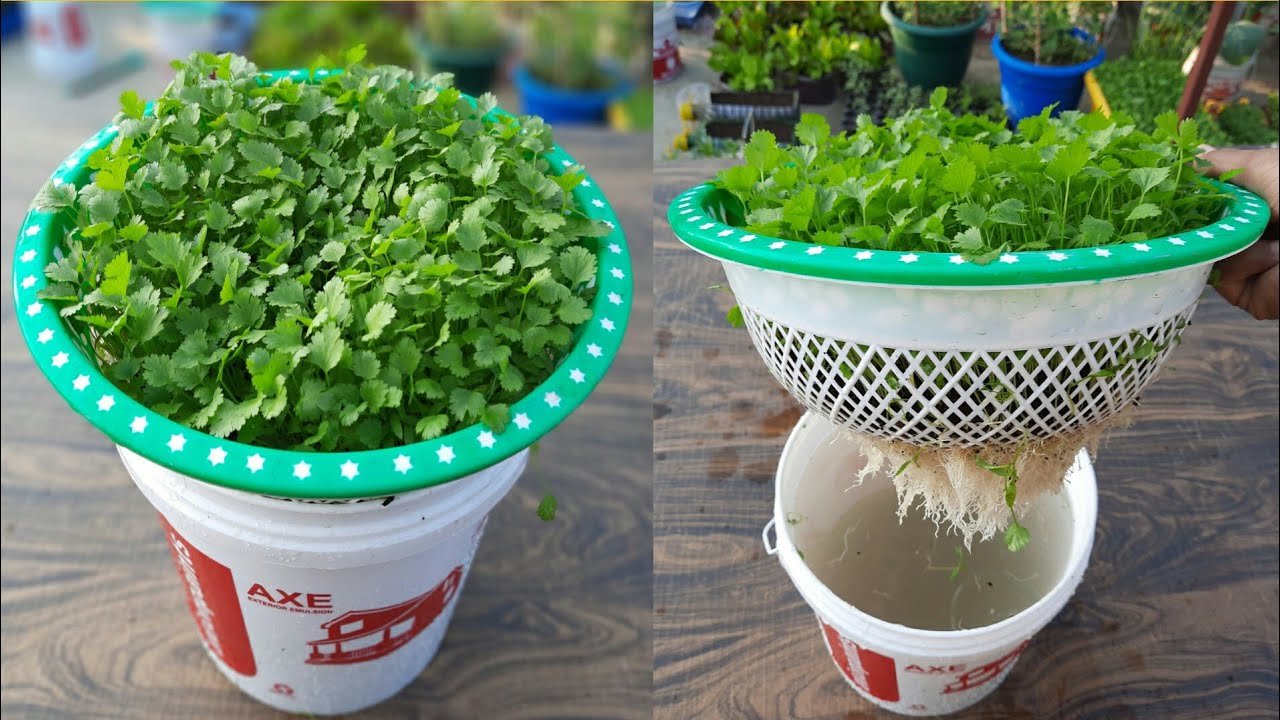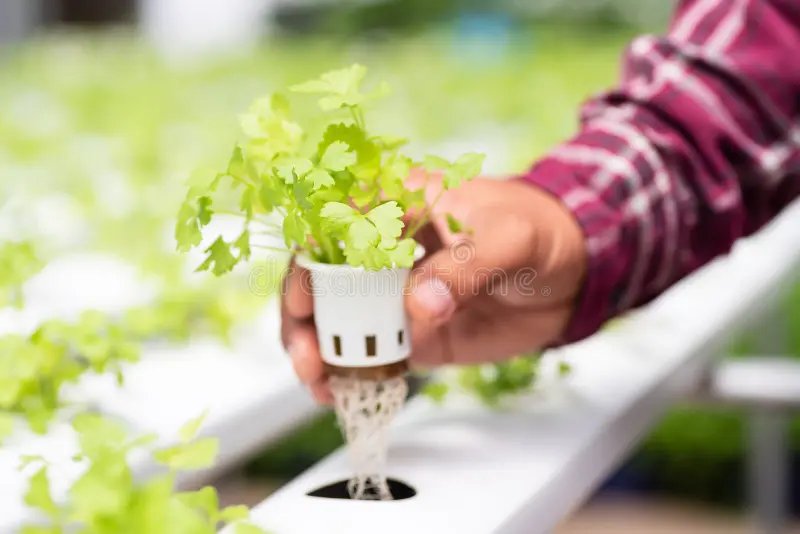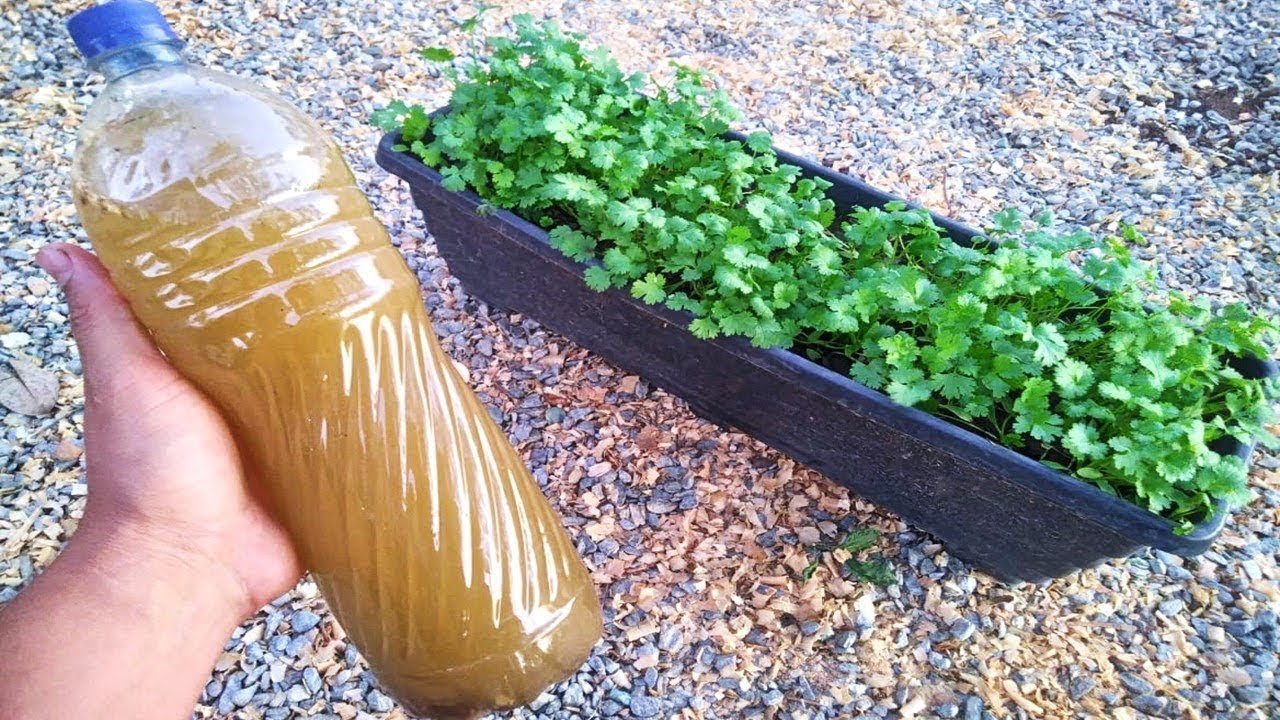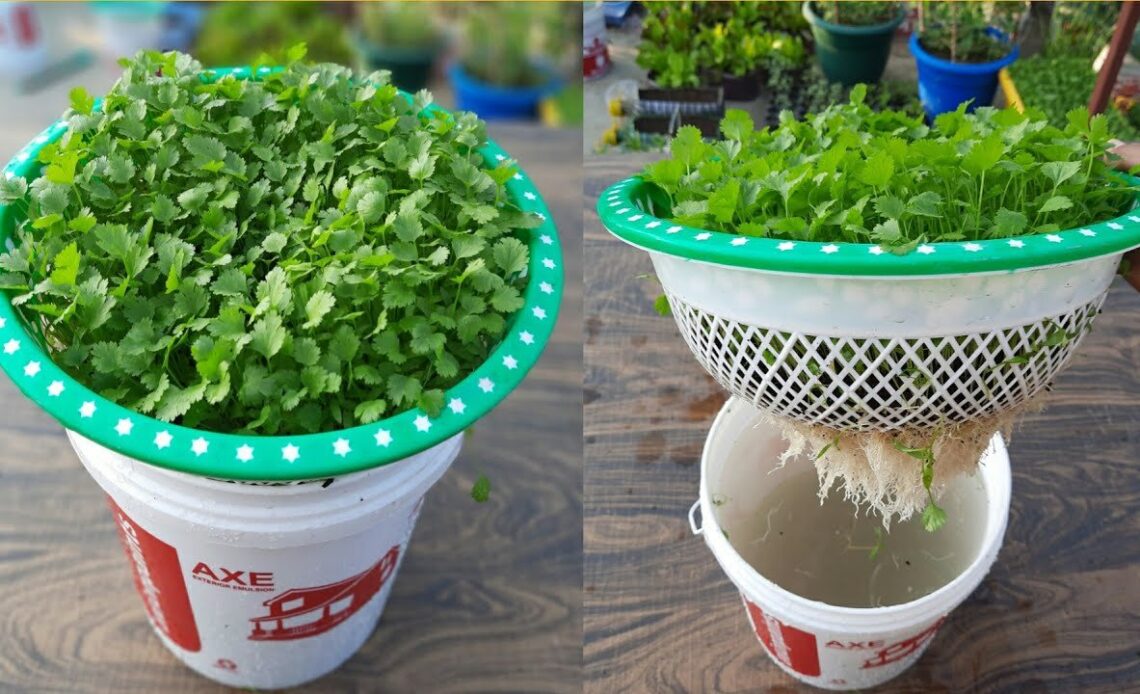Cilantro, also known as coriander or Chinese parsley, is a versatile herb cherished for its fresh, citrusy flavor and aromatic leaves. Whether you’re using it to garnish soups, spice up salsas, or add zest to curries, cilantro is a staple in kitchens worldwide. However, buying fresh cilantro from the grocery store can be expensive, and it often wilts before you get a chance to use it all. The solution? Grow your own cilantro at home using a simple hydroponic method that requires nothing more than water, sunlight, and a few basic supplies. Not only is this approach eco-friendly and cost-effective, but it also ensures you have a constant supply of fresh, pesticide-free cilantro right at your fingertips. In this article, we’ll walk you through the process step-by-step and share tips to help you succeed.

### Why Choose Hydroponics for Growing Cilantro?
Hydroponics, the practice of growing plants without soil by using nutrient-rich water, has gained popularity in recent years due to its efficiency and sustainability. For cilantro lovers, hydroponics offers several advantages:
1. **Space-Saving** : Hydroponic systems can be set up indoors or outdoors, making them perfect for small apartments, balconies, or countertops.
2. **Faster Growth** : Plants grown hydroponically tend to grow faster because their roots have direct access to water and nutrients, eliminating the need to “search” for resources in soil.

3. **Year-Round Harvesting** : With hydroponics, you’re not limited by seasonal changes. You can grow cilantro anytime, anywhere, as long as you provide adequate light and care.
4. **Clean and Chemical-Free** : Since hydroponic setups don’t rely on soil, there’s no risk of pests or weeds, reducing the need for harmful pesticides or herbicides.
Best of all, growing cilantro hydroponically is incredibly easy—even if you’re a beginner gardener. Let’s dive into how you can start your own cilantro garden today.
### Step 1: Gather Your Supplies

Before you begin, gather the following materials:
– **Cilantro Seeds or Cuttings** : You can either start from seeds or repurpose leftover cilantro stems with roots from the grocery store.
– **A Container** : Use a jar, glass, or any shallow container that can hold water.
– **Water** : Filtered or distilled water works best to avoid contaminants like chlorine found in tap water.
– **Nutrient Solution (Optional)** : While cilantro can grow in plain water, adding a diluted hydroponic nutrient solution will promote healthier, faster growth.
– **Sunlight or Grow Lights** : Place your setup near a sunny window or use artificial grow lights if natural light is limited.
– **Support System (Optional)** : If using cuttings, you may need toothpicks or a mesh lid to keep the stems suspended above the water.
### Step 2: Prepare Your Cilantro Stems or Seeds
#### Option 1: Starting with Stems

If you already have fresh cilantro from the store, save the stems with roots attached. Follow these steps:
1. Trim the bottom of the stems to remove any damaged parts.
2. Place the stems in a jar or glass filled with about an inch of water. Ensure the base of the stems is submerged while the leaves remain above the waterline.
3. Use toothpicks or a mesh lid to prop up the stems so they don’t sink completely into the water.
#### Option 2: Starting with Seeds
For those starting from scratch with seeds:
1. Soak the seeds in water for 24–48 hours to soften their outer coating and encourage germination.
2. Once soaked, place the seeds on a damp paper towel inside a plastic bag to sprout. Keep the bag in a warm, dark location until tiny roots appear (usually within 3–7 days).
3. Transfer the sprouted seeds to your container, ensuring the roots are submerged in water.
### Step 3: Provide Adequate Light and Care
Light is crucial for photosynthesis, which fuels plant growth. Here’s how to ensure your cilantro gets what it needs:
– **Natural Sunlight** : Position your container in a spot where it receives at least 4–6 hours of indirect sunlight daily. Avoid prolonged exposure to harsh midday sun, as it can scorch the delicate leaves.
– **Artificial Lighting** : If you lack sufficient natural light, invest in LED grow lights. Position the lights 6–12 inches above the plants and leave them on for 12–14 hours per day.
In addition to light, monitor the water regularly:
– Change the water every 2–3 days to prevent stagnation and bacterial growth.
– If using a nutrient solution, follow the manufacturer’s instructions for dilution rates and frequency of application.
### Step 4: Watch Your Cilantro Thrive
Within a week or two, you should notice new leaf growth emerging from the tops of your cilantro stems or seedlings. As the plant matures, it will develop lush, vibrant foliage ready for harvesting. Unlike traditional soil-based gardening, hydroponic cilantro grows quickly and continuously, allowing you to enjoy multiple harvests over time.
### Tips for Success: Maximizing Your Hydroponic Cilantro Garden
To ensure your cilantro thrives, keep these tips in mind:
1. **Harvest Regularly** : Prune your cilantro frequently by snipping off the outer leaves. This encourages bushier growth and prevents the plant from bolting (producing flowers and going to seed prematurely).
2. **Maintain Proper Temperature** : Cilantro prefers cooler temperatures between 50°F and 85°F (10°C–29°C). Avoid placing your setup near drafty windows or heat sources.
3. **Prevent Bolting** : High temperatures and inconsistent watering can cause cilantro to bolt. To delay this, provide consistent moisture and shade during hot weather.
4. **Experiment with Variations** : Try growing other herbs like mint, basil, or parsley using the same hydroponic method. Many herbs thrive in water-based systems
### Benefits of Growing Cilantro Hydroponically
Growing cilantro hydroponically isn’t just convenient—it’s also beneficial for both you and the environment. Here’s why this method stands out:
– **Saves Resources** : Hydroponics uses up to 90% less water than traditional soil-based gardening since water is recycled within the system.
– **Reduces Waste** : By regrowing cilantro from scraps, you minimize food waste and make the most of every purchase. People who read this article were thrilled to discover the simplicity and effectiveness of growing cilantro hydroponically. Many reported saving money and enjoying fresher flavors in their cooking. One reader shared, “I never thought I could grow cilantro indoors, but now I have a steady supply right on my kitchen counter” Another commented, “This method is so easy—I’ve even started growing other herbs too”
### Final Thoughts: Embrace the Joy of Homegrown Cilantro
Growing fresh cilantro at home with just water is a rewarding and sustainable way to elevate your culinary creations. With minimal effort and investment, you can enjoy crisp, flavorful leaves year-round while reducing your reliance on store-bought produce. Whether you’re a seasoned gardener or a complete novice, this simple hydroponic method proves that anyone can cultivate their own little green oasis.
So grab a jar, some water, and a handful of cilantro stems—and embark on your journey to becoming a homegrown herb enthusiast. Your taste buds (and wallet) will thank you
